Corpus of the Inscriptions of Campā
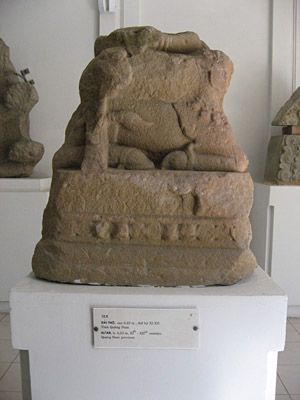
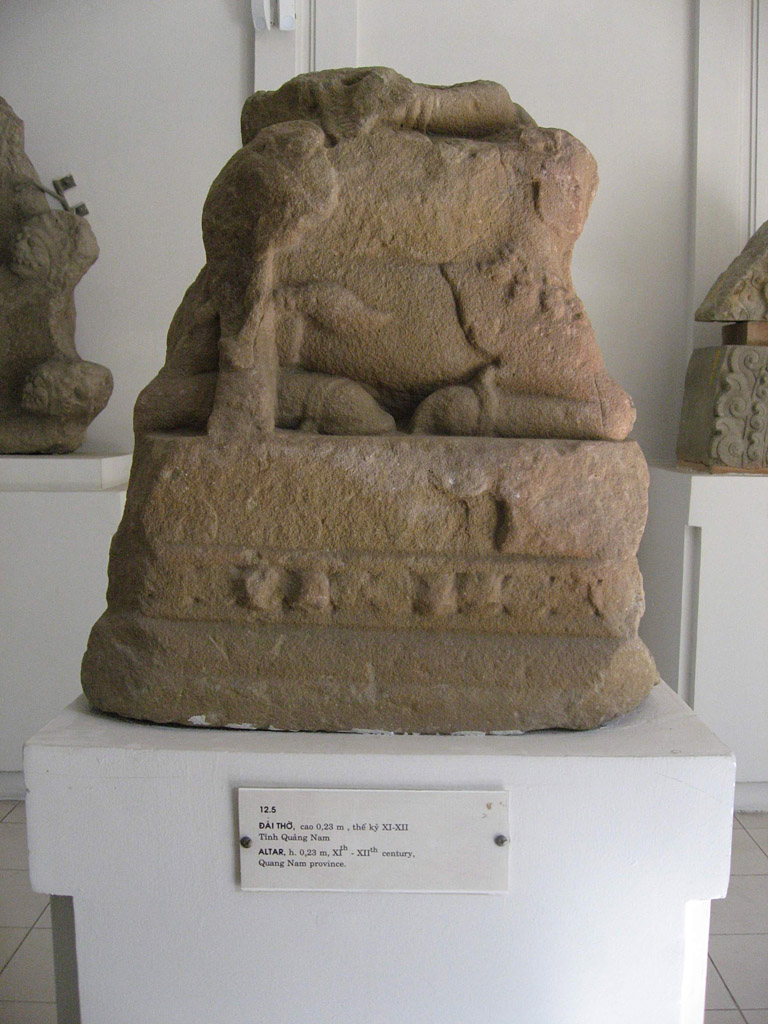
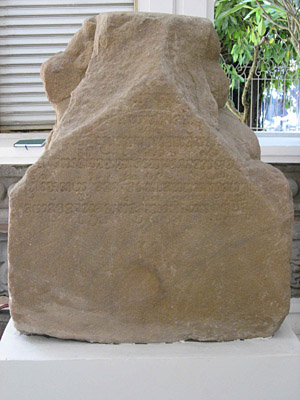
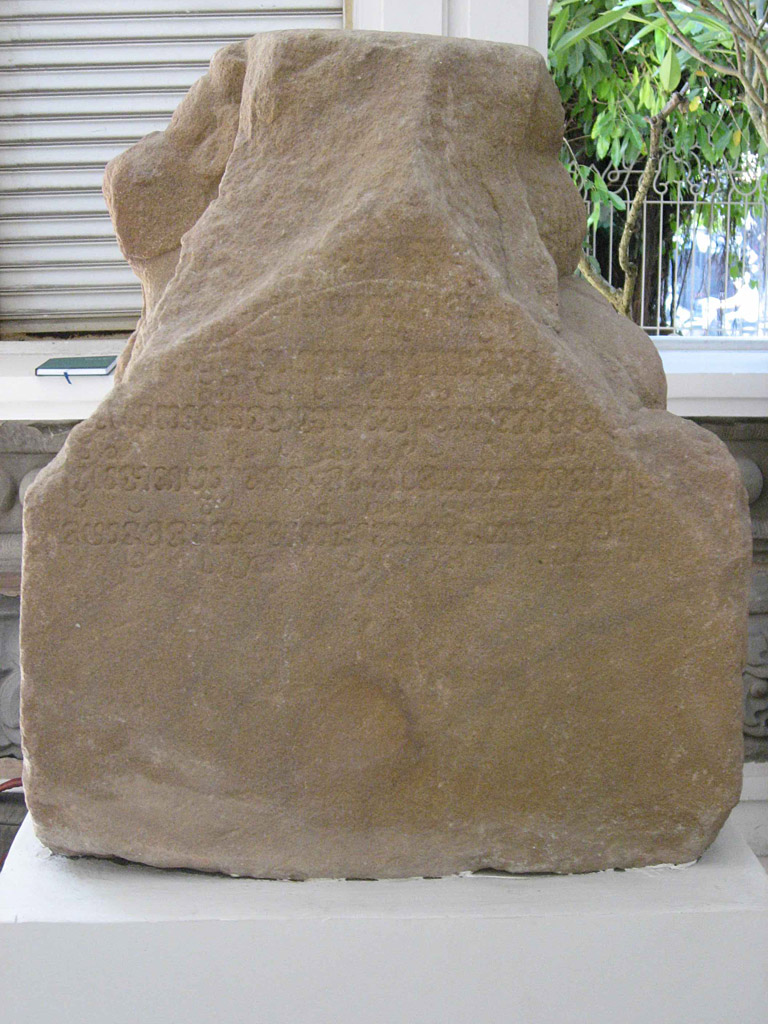

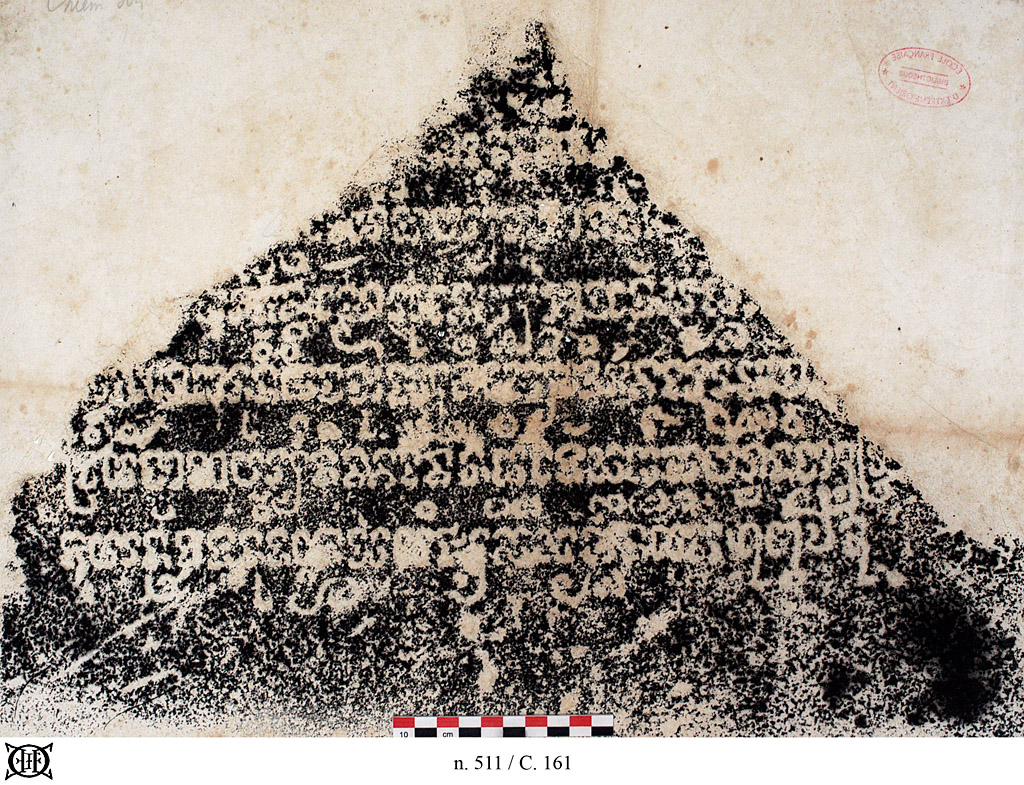
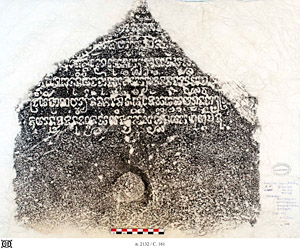
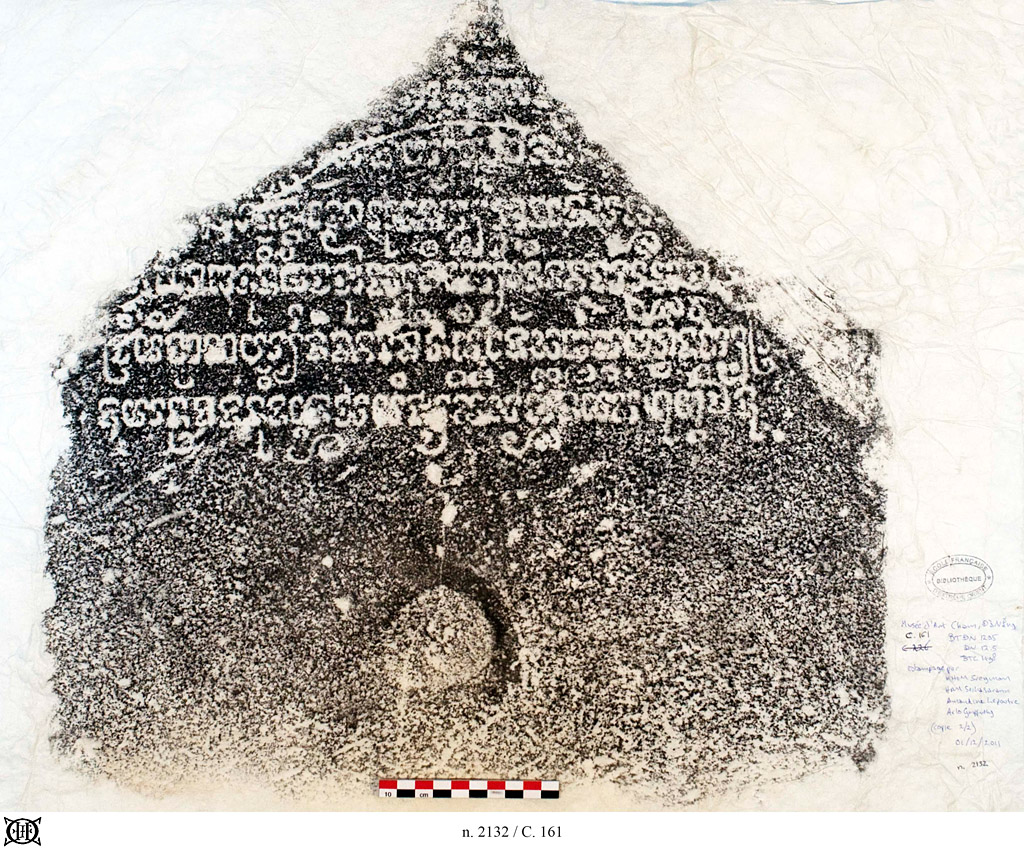
C. 161 Broken statue of Śiva mounted on his Bull from Chiêm Sơn
Please note: you are reviewing a preprint version of this publication. Contents here may change significantly in future versions. Scholars with specific interests are urged to consult all cited bibliography before using our texts and translations or drawing other significant conclusions.
Support Back of the lower part of a broken sculptural stela of Śiva seated on his Bull;1 sandstone; h. 56 cm × w. 48 × d. 37.
Text Remains of seven lines on one face written in Old Cam.
Date 1365 Śaka (1443/4 CE).
Origin Settlement of Chiêm Sơn (Quảng Nam).
This piece was found under unknown circumstances at Chiêm Sơn2 before 1923, when it was first listed in the inventory of Campā inscriptions under the entry C. 161 (Cœdès 1923). We identified the stone in the Bảo Tàng Điêu Khắc Chăm Đà Nẵng (Museum of Cham Sculpture) at Đà Nẵng in 2009 and following years, as the one bearing inventory numbers 12,5 = BTC 1498 = BTĐN 1205 (ECIC III: 449).
Edition(s) First published in Đà Nẵng Catalog: 241-243, whence the present edition.
Facsimiles
- Estampage: EFEO 824
- Estampage: EFEO n. 272
- Estampage: EFEO n. 511.3
- Estampage: EFEO n. 2131 & 2132
The following text was edited by Arlo Griffiths and Amandine Lepoutre.
(-6)
(-5) { ? }(de)śamaryyā(da) bhāja di na{ ? }
(-4) { ? }gva hetu (ra)nakṣa (bh)āva jem̃ (dhar)mma { ? }
(-3) (para)loka dudim̃ śivarūppa nī pyauḥ di nagara atmarā{ ? }
(-2) vrim̃ śivācāryya di nagara ja bhaktī jem̃ dharmma mayvā di kṣatr[iya-]
(-1) ja ya dṛm̃ rāja dudim̃ jmai paliṅyak· (dh)armma di śaka 1365
5 (de)śamaryyā(da) ◇ the reading is partly conjectural, and our proposal is based on the supposition that we have here a synonym for the expression janapadamaryyādā that is found in the (much older) inscriptions C. 72 and C. 217. — 4-3 ... paraloka ◇ in view of the sequence rijan· śivaprathimānna pyauḥ bhanakti prathidinna di loka ṅan· paraloka dudim̃ occurring in C. 42, l. 11–12, we are tempted to restore di loka ṅan· at the end of line -4. — 3 atmarā{ ? } ◇ the initial a is surprising, for one expects ātma°, perhaps to be restored as ātmarāṣṭra or ātmarāj(y)a.
Translation
… rules of the land … because he protected beings, that is why (jem̃) the religious law (dharma) … yonder world. In the future (dudim̃), let these various images of Śiva be in the land of his own … He ordered Śiva-priests in the land, who were faithful to the religious law, to pay heed to (?, mayvā di) those of noble birth (kṣatriyaja) in the future who will hold the kingdom (rāja = rājya)! Do not destroy the foundation (dharma)! [Engraved in the Śaka year] 1365.
Commentary
Notes
- The support is not “sur dos de Nandin” (Cœdès 1923, under C. 161).
- The list of estampages held at the EFEO library in Paris, under n. 272, mentions as provenance "manoir de Chiêm-son".
- This number comprises two estampages.



The iconography of what remains of the sculpture seems somewhat comparable with that seen in the sculpture whose back bears the inscription C. 42 from Drang Lai, which dates to the same period, although the posture of the deity sitting on the bull is different in both cases. Another inscription that has come to light in recent years (C. 215) is engraved on the back of the upper part of a broken statue of Śiva. The god’s mount and head are here not preserved, but what is preserved of the torso is very comparable to the Śiva from Drang Lai, bearing on its back C. 42, and so the torso may be considered to have been a Śiva. Moreover, this fragment of a Śiva was found at the site of Chùa Vua (or Gò Lồi) in the valley Chiêm Sơn Tây (Chiêm Sơn West) near Trà Kiệu.
In other words, we have two contemporary fragments of inscriptions, one engraved on the upper back, the other on the lower back of a sculpture, both of these fragments found in Chiêm Sơn; the one fragment shows the torso of a possible Śiva, the other the lap of a deity sitting on a bull, i.e. almost certainly Śiva. We are very tempted to consider that these two inscriptions, C. 215 and C. 161, originally belonged together as top and bottom. The measurements of the stones would seem to allow this hypothesis, although both fragments have suffered a lot precisely in the place where the pieces would have been joined, so it is hard to get any certainty from measurement, and it is not likely that physically trying to join the two pieces would yield clear confirmation either. We have measured the size of the letters of the two inscriptions, and the result was some dissimilarity in size, so that we remain in doubt about this hypothesis.
The final words of this inscription show the same formula with which the inscription C. 42 is also terminated.